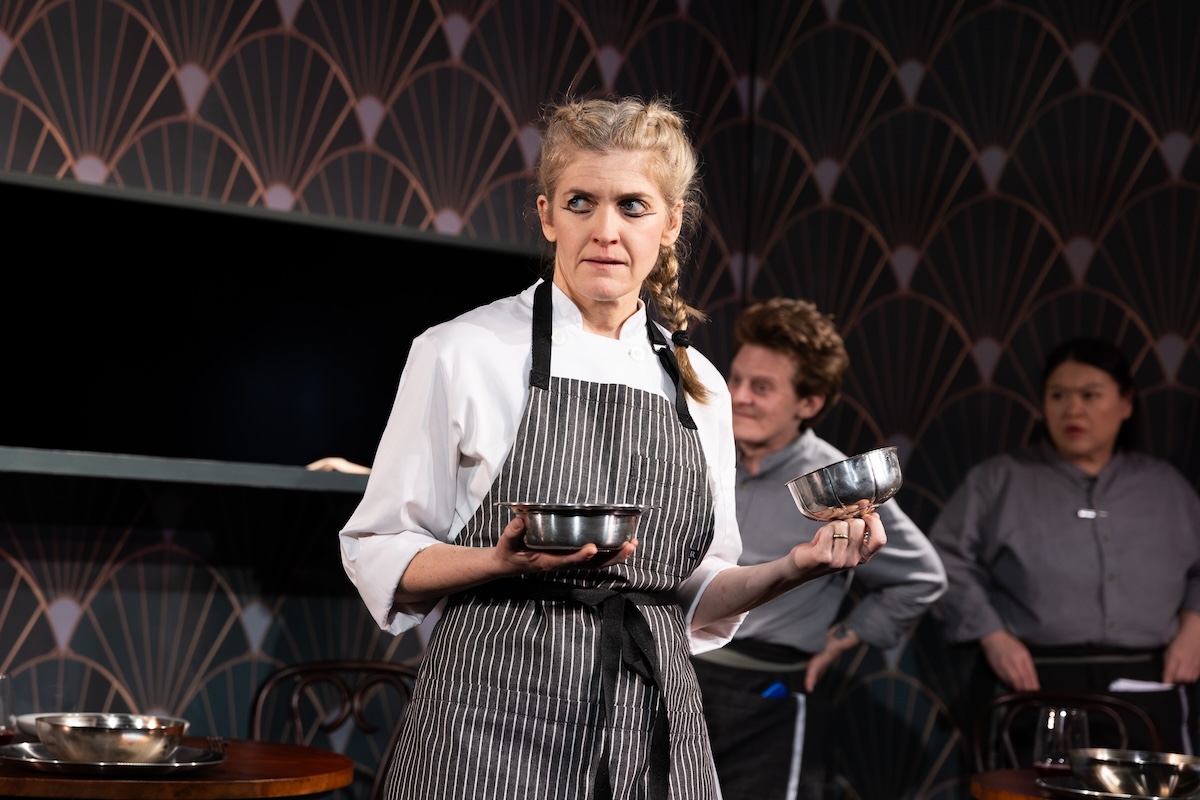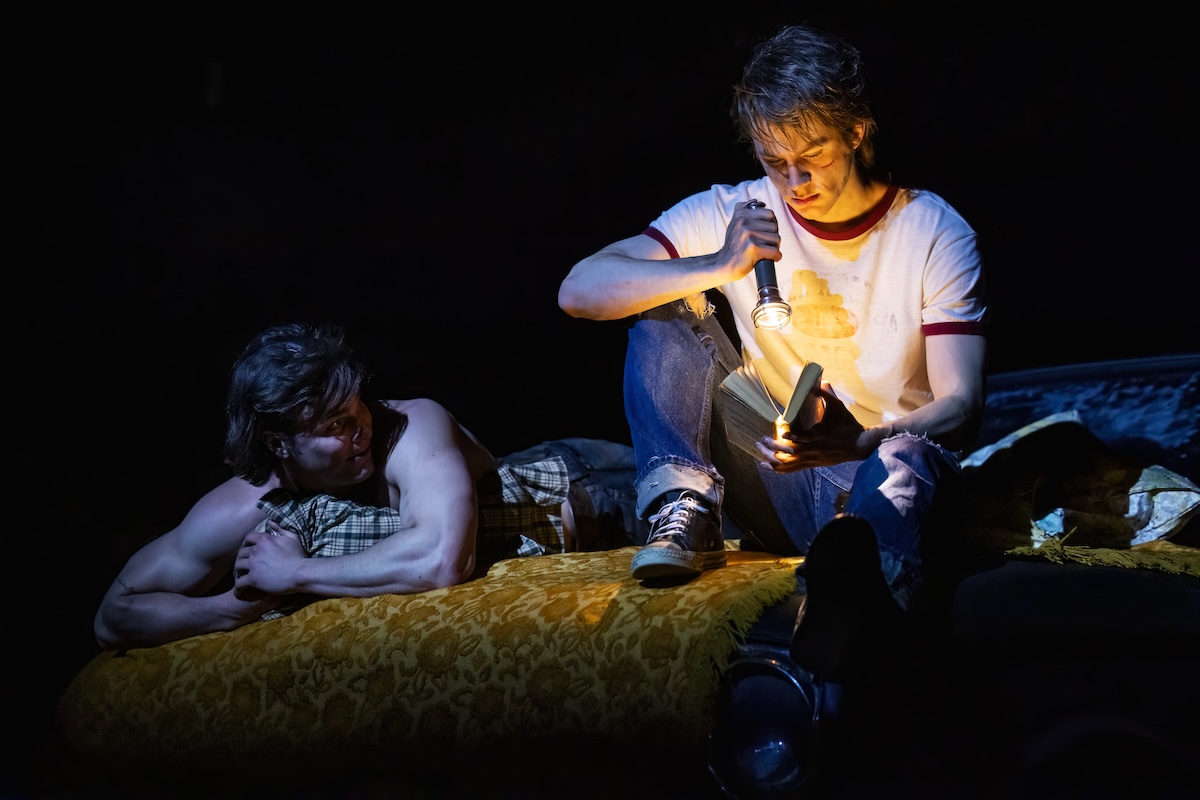Review: Icons/Idols: In the Purple Room Takes Us Inside the Palace of Constantinople
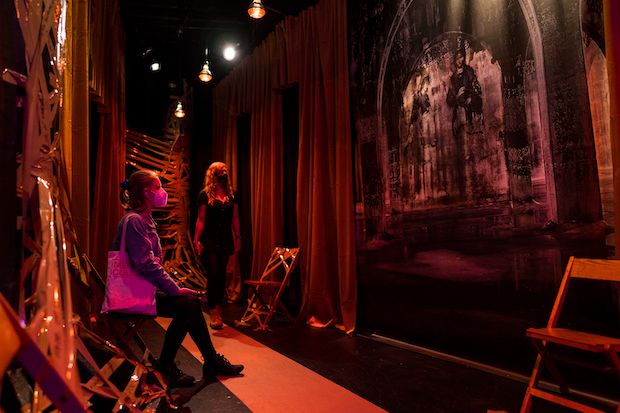
(© Diego Quintanar)
Last Sunday was Mother's Day, a time to show our appreciation for Mom and her boundless love. At least, that's the cliché. The truth of any mother-child relationship is always more complicated than what can fit on a greeting card. That's clear enough in Icons/Idols: In the Purple Room, Byzantine Choral Project's ambitious yet somewhat disappointing audio play and installation about Empress Irene. While there are no live performers, it invites audiences back inside the New Ohio Theatre for the first time in over a year to see the space transformed into an eighth-century Byzantine palace. It's like a guided tour of a museum, but a whole lot bloodier.
The title of the piece refers to the porphyry chamber of the Great Palace of Constantinople, a room lined with expensive purple stone and reserved for the birth of the children of reigning Eastern Roman emperors (what we now call "Byzantine"). Those born within the chamber gain the special designation of porphyrogénnētos — "born in the purple."
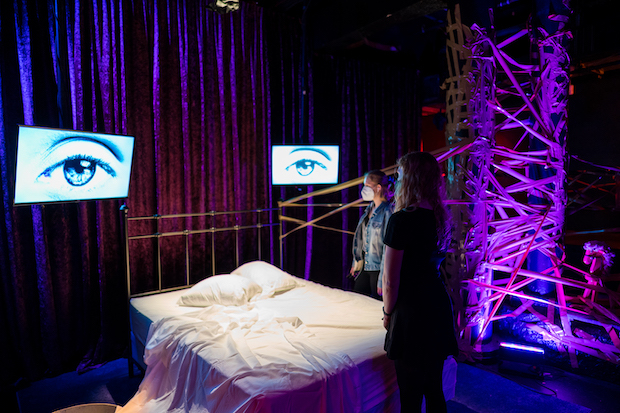
(© Diego Quintanar)
This is true of Constantine VI (voiced by Isabella Dawis), who was born in the purple in 771 to Leo IV (Yael Shavitt) and Irene of Athens (an intense Kay Weber). The play (by Helen Banner) begins several years before that when a teenage Irene arrives at court with a small icon of the Virgin Mary hidden under her clothing. This is dangerous as the reigning emperor (Hannah Eakin) is a fanatical iconoclast who sees the veneration of icons as idolatry. Irene tells him that she agrees (she lies) and he chooses her to marry his son and heir, Leo.
After Irene gives birth to Constantine, she raises him into her secret faith, allowing him to see and kiss her icon, in hope that the future emperor will restore the icons to Orthodoxy. But when this heresy is discovered by a spiteful nurse (Iris Beaumier), Irene is separated from her son and made a prisoner in the palace. It is a testament to her cunning that she eventually escapes from this lowly place to rule over the empire for two decades. And one need only step inside an Orthodox Church today to see who ultimately won the argument over icons.
Afsoon Pajoufar's installation brings us into the palace to witness the intrigue firsthand. Many of her design choices are beautiful and evocative: a metal candelabra suspended before the decaying apse of a Byzantine church, tangles of brown packing tape with little written messages creating a web of rumors across the tomblike space, a bedside basin of blood in the porphyry chamber. Other choices are baffling, like an anachronistic remote control laid placidly on that same bed. Still, it is hard not to admire Pajoufar's resourcefulness in using an off-off-Broadway budget to re-create Byzantine splendor. The eunuch Staurakios (Lukas Papenfusscline) guides us through, helpfully conveying his secret knowledge of the palace as only a eunuch could.
Sound pervades the 45-minute script: Inspired by Byzantine chant, Grace Oberhofer has composed gorgeous and haunting new music for female and nonbinary voices. Beautifully performed, it is far more pleasant to listen to than the real thing, which is dominated by growly male voices. And the musical form allows Irene to sing her innermost thoughts (lyrics by Banner). The repeated line "My Lord is my Lady is my Lord" conveys both the depth of Irene's iconophilism and her unique position in Byzantine history.
It is telling that Banner spares barely a sentence at the very end for the most dramatic chapter in Irene's life: In 797, in the exact room where she gave birth to Constantine, Irene had his eyes gouged out, leading to his painful death and five years of her personal rule. "Irene Makes History as First Woman Basileus," Byzantine Buzzfeed might blare — but at what cost?
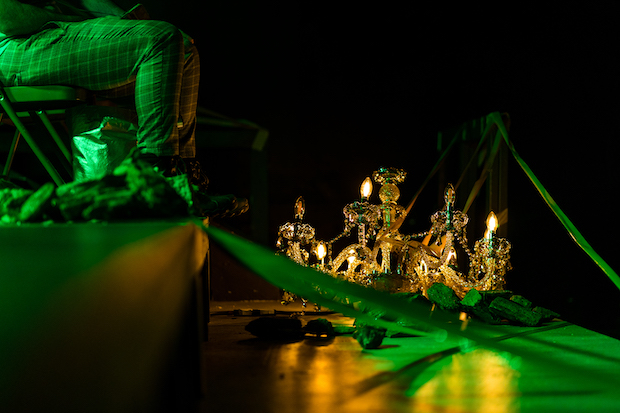
(© Diego Quintanar)
Unfortunately, Banner does not explore this question with In the Purple Room, resulting in a piece that feels unfinished. And in a way, it is: This audio tour is adapted for pandemic times from Banner's longer play Irene, which is only the first part of a tetralogy. One hopes that in later chapters, Banner considers what it would take for a mother to blind her own son to death. As it is, we are told of the vile deed and then shuffled out into the lobby. In its present form, which is endlessly sympathetic to Irene, In the Purple Room feels like the most shameless apologia for filicide since Medea rode off into the sunset in her divine grandfather's chariot.
That one of the most infamously cruel Roman emperors — and Irene, who minted coins with her face on both sides, was undoubtedly an emperor — should get this Wicked-like reappraisal tells us more about our present cultural obsessions than it does about Byzantium. It made me wonder: As Abir Moussi of Tunisia seeks to revive the dictatorship of her old boss for herself, and as Kim Yo-jong of North Korea looks covetously on her sickly brother's throne, will heroic ballads be sung of them? Will the 21st century see an expansion of freedom and equality, or will it merely see the rise of the lady autocrat? How deep is the appetite to break the glass ceiling that feminist storytellers are willing to discount as necessary collateral damage those sliced open by the falling shards? In The Purple Room suggests that the hunger is real, and it won't be satisfied by a Mother's Day brunch.








